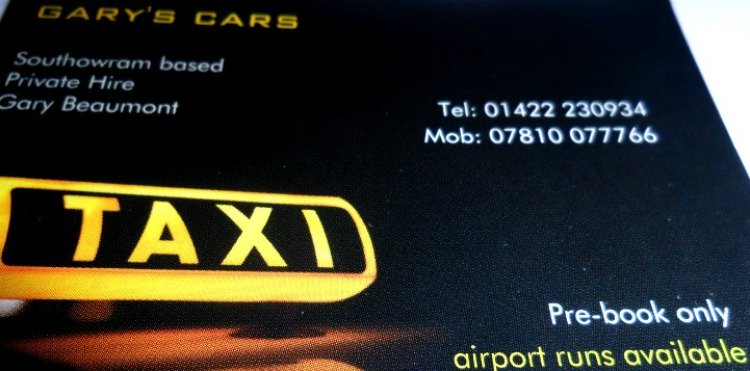Historic Boothtown

Historic Boothtown is divided in to:-
- North Bridge to Haley Hill
- Haley Hill
- Range Lane
- Woodside
- Akroyden
- Boothtown Village
- Ploughcroft
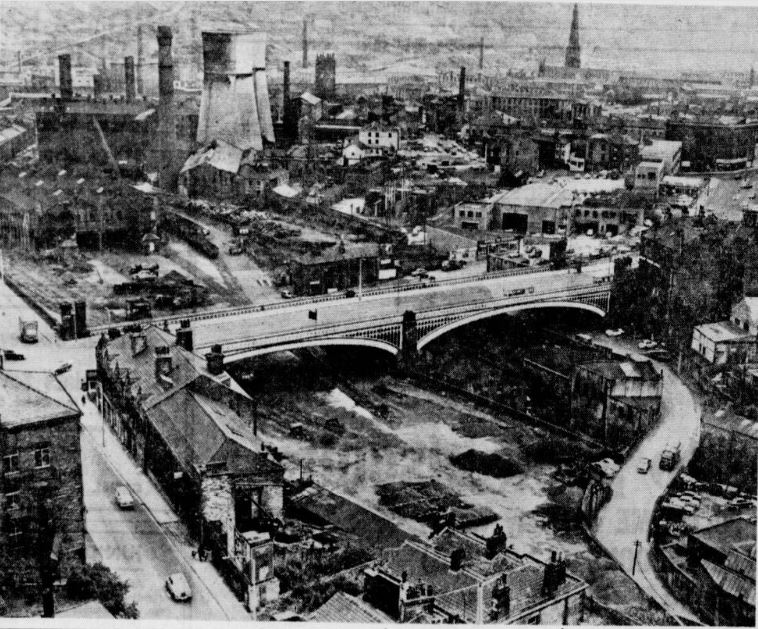
Historic Boothtown photos start at North Bridge and continue towards Queensbury whilst viewing sites and subjects on both sides of the main road.
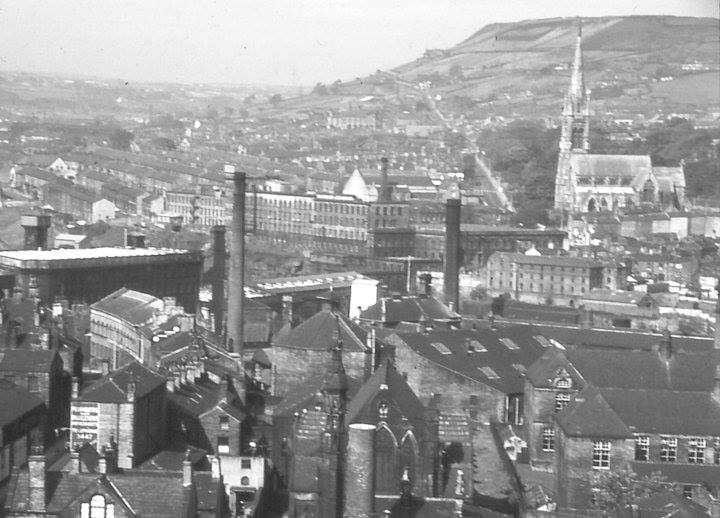
All Souls Church and Boothtown from Halifax


View the 1905 Boothtown map


We need to cross North Bridge then turn left

Now we have crossed the bridge, New Bank is the wide road facing us, Range Bank Bends round the back oto the left and turn immediate left for Haley Hill and Boothtown

The view back along North Bridge
Range Lane


Looking down Range Lane and Wood Street

Bottom of Range Lane in 1967 during the building of the flats



 |
 |

Sunnyside School







Haley Hill







In 1936
1 - Tom Marsh - tobacconist
3 - Albert Firth - jewellers and optician
5 - Willie Jones - Boot and Shoe Repairer
7 - J Boocock and son - wholesale confectioner dealer
9 - St.Bernards Catholic Association








Plan of Haley Hill in 1850



General Baptist Church, Haley Hill, by William Burgess, 1788. The chapel sprang from the evangelistic outreach of a General Baptist society at Queensbury during the pastorate of the Revd John Taylor (1742-1818), supported by his brother, the Revd Daniel Taylor (1738-1816). After cottage meetings in 1773 the fledgling society met initially in a rented room in Gaol Lane in 1775, moving to a new chapel on Haley Hill opened in September 1777. In 1782 when the society formally seperated from the Queensbury society it had a membership of 30 and in October 1783 Daniel Taylor became its pastor for almost two years before reluctantly responding to pressure for him to move to London in the wider interests of the connexion. In 1854 the congregation moved to a more central site on North Parade. (Photograph courtesy of Calderdale Museums Service, Bankfield)




Victoria and Albert - In between Victoria Street North and Albert Street (off Haley Hill). (maybe a mirror image)

Albert Street North




Coach and Horses - 83 Haley Hill.



  |
 |
 |
 |
 |
 |

 All Souls Church - 66 Haley Hill |
 |
 |
 |


All Souls was commissioned and paid for by the local industrialist Edward Akroyd in 1856, and was intended to be the centrepiece of the model village of Akroydon. Akroyd appointed Sir George Gilbert Scott as architect, and the church was completed in 1859. Scott considered it to be his finest church. Scott also designed Akroyd’s own house and garden, the vicarage and houses for his employees.
The tower has four stages, on the top of which is a parapet containing arches, and an octagonal, crocketted pinnacle at each corner. In the upper stage of the tower are double two-light bell openings. The staircase is contained in the wall and the buttress at the northeast corner of the tower. The spire is divided into five stages by moulded bands; in three of the stages are gabled windows. On its summit is a finial and a weathervane. At the west end of the church is a deeply recessed doorway, over which is a tympanum containing sculpture. The south porch contains an arcade of three arches, each containing a single-light trefoil-headed window, and deeply recessed doorways. On the north face of the north transept is a priest’s door. The clerestory has 15 windows on each side.
Internally, between the nave and aisles are arcades with columns made from Derbyshire marble. The piers of the tower and transept arches are made from Aberdeen granite. The church is floored with Minton black, red and chocolate encaustic tiles. The three steps leading from the nave to the chancel are in Nottinghamshire red sandstone. The arcades between the chancel and the chapels are carried on columns of Italian marble. In the chancel is a sedilia, and a credence table built into its wall of the chancel. Between the nave and the chancel is an alabaster plinth carrying an screen in wrought iron. The screen was made by Francis Skidmore.
The reredos is in alabaster and contains niches with statues of the Virgin Mary, Mary Magdalene, Mary of Bethany, Saint John, Nicodemus and Joseph of Arimathea. The octagonal pulpit is in Caen stone on a pedestal of Derbyshire marble. The font is square and has a circular bowl. It is made in serpentine from The Lizard and is carried on a pedestal of Aberdeen granite. All the windows contain stained glass. Some of the windows were designed and made by Hardman & Co., and others are by William Wailes, and Clayton and Bell.
After the church was declared redundant, the entrance doorway in the south porch was boarded up to prevent vandalism. This was considered to be unsightly, and the Churches Conservation Trust commissioned the design and construction of a set of gates. These are made in iron and have been painted in reddish-brown to complement Scott’s design, and the cross and floral motifs have been gilded. At the same time some conservation work was carried out to the surrounding stonework in the porch, and also around the west window. In 2007–08 the Trust carried out more extensive repairs to the church, including some re-roofing to make it weatherproof, and repairs to the stained glass windows and tracery.
Woodside





Woodside Baths - 101 Haley Hill

Woodside Road Dam in 1958, just below the baths.


Donkey Hill from Woodside down to Old Lane, Dean Clough















Woodland Tavern - 40 Boothtown Road



Akroydon - Colonel Edward Akroyd. Akroydon Square, an early example of town planning. The architecture of the houses is "domestic Gothic" and the streets are named after English Minster and Cathedral churches. Building began here in March, 1861.


1877 – Victoria Cross, Halifax, Yorkshire
Architect: W. Swinden Barber
Erected at the cost of Col. Akroyd and published in The Building News, May 11th 1877.
 |
 |
When Col. Akroyd presented the square park to the Akroyden estate, he also had this monument built. It is a Victoria Cross and bears the inscription 'Erected as a monument of Christian reverence for the emblem of the cross; and of loyalty to our sovereign lady, Queen Victoria by Edward Akroyd, the founder of Akroyden 1875. Fear God, Honour the King.' The square park was opened and presented to the residents on Saturday, April 29th. 1876 the ceremony being performed by Mrs Akroyd, in the absence of her husband, who was travelling in the south of Europe. It was estimated that the park cost something over £10,000, and the monument, which was designed by Mr. Swindon Barber, another £3,000.
The square was primarily intended for the use of residents of Akroyden, each house having a key in return for annual subscription, which was devoted to the cost of gardening and upkeep. Eventually, in the early part of the C19th, the park was handed over to municipal authorities.


Now known as Sullivans - 51 Boothtown Road

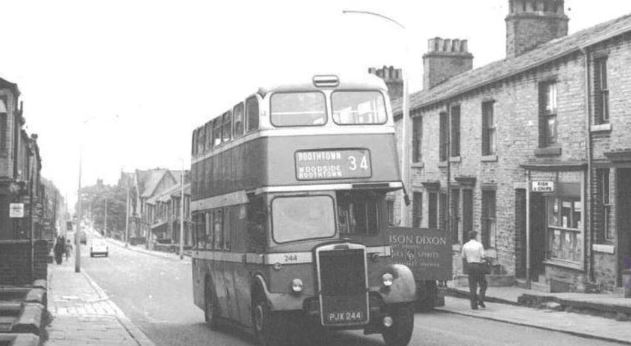

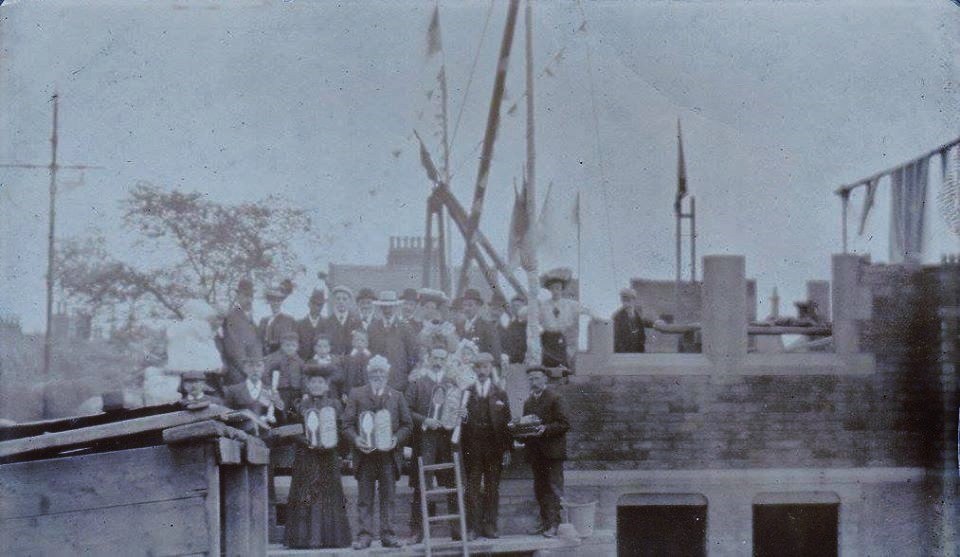
Building Boothtown and Southowram Methodist Church


Uttley Street


Parmar Restaurant which had been 'Lock, Stock and Barrel' and 'Foggy's'. Before that it was the Lithuanian Club.

 |
 |






Martin Street

St. Peters Street

Mill Lane










See also Percy Shaw page
|
If you have enjoyed your visit to this website, please spread the word by clicking the 'like' and 'share' buttons below. Thank you




